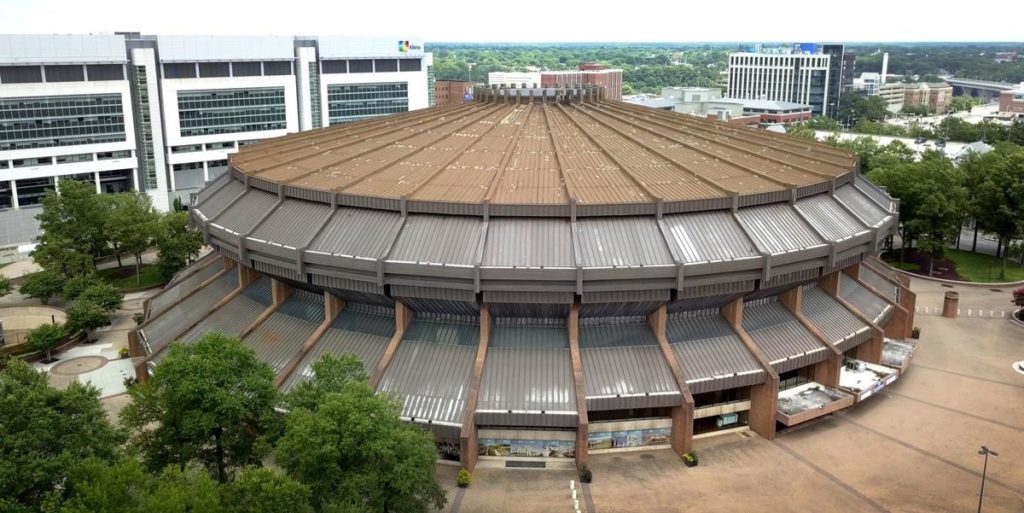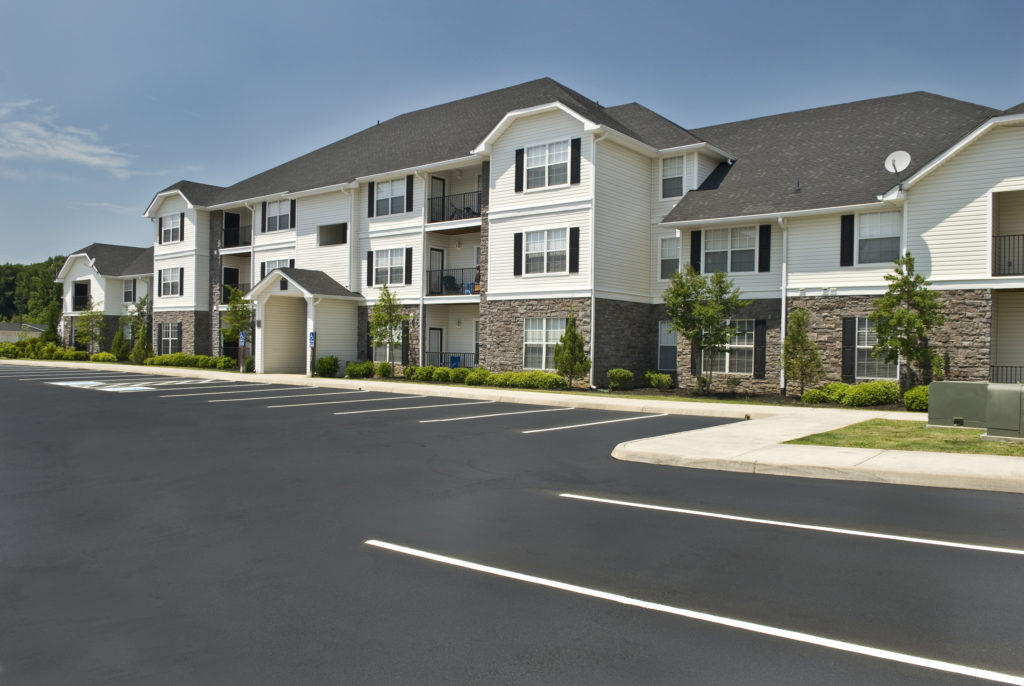Author Archives: NAIDominion
Waterfront apartments and a new city hall: developer wants to reshape downtown Portsmouth
Local developer submits plan to Richmond for renovating Coliseum and redeveloping area around it
6 Creative Ways to Increase the Value of Your Multifamily Property
Whether you are looking to sell your multifamily property or want to validate raised rates for the asset, you’ll want to increase the value of the property. Let’s take a look at six creative ways to increase the value of your multifamily property.
Perform Repairs and Make Improvements
If your multifamily property needs to be modernized or needs cosmetic work, by performing these tasks, you can significantly raise the rent. The rental income from outdated units will land somewhere in the middle of modern rent prices and those from its original era. An upgraded unit can fetch market rates. Consider painting the property’s exterior and upgrading the leasing center as well as the units. This is going to be the most effective way to increase the value of the property.
Increase the Rentable Square Footage
If there are common areas on the property, it can be tough to catch the true value of these in the rent. Increasing the area of rentable square footage can result in a higher total rental income. Many renters would prefer having larger units than extra common areas.
Subdivide or Combine Units
If the property is not the right size or configuration to adhere to the current demographics in the market is located in, you can add value to the property by subdividing or combining units. If you have two 1,500 square foot units and the demographics in your area call for more families with children, consider combining these units to create a 3,000 square foot unit that can tailor to a four-person family. This can help decrease vacancy as well.
Reduce Property Expenses
All of the expenses that come with owning a multifamily property add up, such as advertising, insurance, lawn maintenance, accounting, legal fees, property management, licenses, and repairs. Anything that can be done to decrease these expenses without sacrificing the quality and care of your property can put money back into your pocket and increase the value of the asset.
Meter Separately
Gas, water, and electricity are all consumable resources that will be variably used by tenants. In order to maximize the value of the property, pass off these expenses as much as the market will allow in your area. If the infrastructure of your multifamily property is not metered separately, consider making it so. This submetering can help allocate expenses to your tenants fairly and take this burden off of you.
Raise Rent
If your rates are significantly below market, you may be able to bump these up when the next opportunity arises. Even a 2% or 3% annual inflationary increase will add up over the years. You can definitely raise rents if you have performed upgrades both cosmetically and with technology both in units and in common areas.
The number one goal when investing in multifamily property is to increase the Net Operating Income. These tips are ways to create value-adds that will increase the property’s worth so you can either sell or raise the rent depending on your overall goal.
Lynnhaven North shopping center gets new ownership, major update
Virginia industrial sites sit empty despite hefty spending
Pocono Crossing shopping center in Chesterfield sold for $12.3 million
These Cities Pledge New Buildings Will be Net-Zero Carbon by 2030
In August of 2018, mayors of 19 major metropolises around the globe, including 8 cities in the United States pledged to be net-zero carbon standard by 2030. These cities signed the “Net-Zero Carbon Buildings in these cities will operate at net-zero carbon by 2030. Moreover, by 2050 all buildings, new, old, and in between will also meet the net zero carbon standard.
The cities: Los Angeles, Montreal, New York City, Washington D.C. San Francisco, San Jose, Santa Monica, Newburyport, Paris, Portland, Stockholm, Sydney, Tokyo, Toronto, Tshwane, Vancouver, Copenhagen, Johannesburg, and London are the 19 which signed. 13 of these cities, including Portland and Santa Monica have pushed the envelope even further, they have promised to commit to own, occupy, and create buildings and assets that are only net-zero carbon by 2030. This means all municipal and city building will fall under the guidelines and produce annual reports.
Theses cities’ mayors have not only signed the Net-Zero Carbon Building Declaration, to be net-zero carbon by2030 but they have also pledge to create a feasible plan or “road map” toward this goal. This map will include how to develop construction techniques and incentives, and how to implement, report, and analyze their progress toward the ultimate net-zero goal. Though it may be difficult to convert an older building to this standard, the declaration does pledge to create a cohesive plan to combine state, regional, and federal government along with private sector to engage in the net-zero carbon by 2030 pledge.
So what does net-zero carbon mean?
According to the World Green Building Council, a net-zero carbon building is “highly energy efficient, with all remaining energy from the onset and/or off-site renewable resources.” They must abide by 5 key principals including the following:
- Measure and disclose carbon
- Reduce energy demand
- Generate balance from renewable energy sources
- Improve verification and rigor
As sustainability becomes more important, and current generations begin to become concerned with climate change, global warming and the degeneration of our planet for themselves and future generations we will see issues like this continue to trend. With cities like the 19 that pledged to be net-zero carbon by 2030, and ultimately by 2050, they set an example for other cities and future building. They set a standard for other buildings and cities to emulate. Embracing a trend that many feel passionate about will be seen as a unique selling point for real estate professionals in the future, as being on the cusp of the most current ideas becomes important in a competitive field.
Our Earth is the only home we have, and the initiative to do better is one that has been presented by these 19 cities. Hopefully, it starts a protocol for all cities by 2050 to create a more environmentally friendly global society.
106 townhomes planned in Manchester
5 Smart Ways to Monetize Empty Retail Space
The retail industry has gone through some major changes over the past few years. With the inception and subsequent explosive popularity of e-commerce, retail has been forced to adapt and overcome. However, that hasn’t stopped the sector from hearing about the menacing “retail apocalypse.” With reports of ghost town malls and bankrupt big-box stores, some real estate professionals, landlords, and investors are left to get creative when filing vacant retail space.
Though this may seem disheartening, as finding permanent successful tenants can often take months, don’t fret. There are options to monetize your empty retail space and create income in the meantime. Let’s take a look at 5 ways to do so below.
Pop-Up Shops
Pop-up shops have become increasingly popular in recent years. By offering your space to short term retail shops, your space can remain occupied and often create extreme buzz and foot traffic. If your space has common retail necessities such as wi-fi, technological capabilities, and a restroom; you can accommodate most pop-ups. The company normally will provide everything else, and advertise the location. So, advertising your space for pop-ups can help fill space and a pop-up tenant may even become a permanent one.
Event Rentals
Similar to pop-up shops, vacant space used for event rentals can be very profitable. Various opportunities such as celebrity appearances, party venues, private event hosting, and more have proven popular and profitable. For this purpose, try to keep your space neutral so that events can superficially customize the space. Be sure to check with your real estate team and local government to ensure what is allowed for your space. Additionally, if you pair up with common event services and are able to provide a list of trusted caterers, decorators, or DJs in the area, you can maintain additional appeal.
Subdivide the Space
If your space has been vacant for an increased amount of time, you may want to think about subdividing the space. This can create smaller parcels which can be leased for less, appealing to smaller, often times local, businesses. Shopping local is becoming more popular and can be extremely profitable for landlords.
Gallery Space
Traditional and non-traditional gallery spaces have become a good option to take over vacant retail space. If you have a mall or plaza it allows for a new tenant that does not pose as competition for existing retail space. Additionally, in the social media obsessed age we live in, interactive galleries such as the Museum of Ice Cream, or Candytopia have become incredibly trendy. So weather leasing to an artist who want to showcase their work, an art broker, or an interactive gallery, art spaces are a great way to fill vacant space.
Nonprofits
Renting vacant space to nonprofits are a good way to make sure your spaces are not empty. Though space is normally gifted for free, it can increase foot traffic and current tenants do not consider them as competition.
So as the retail market changes, be creative and thing out of the box when it comes to filling and monetizing vacant space!









